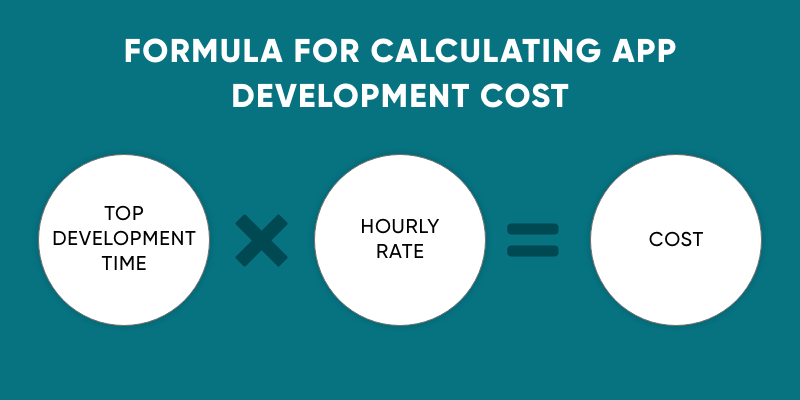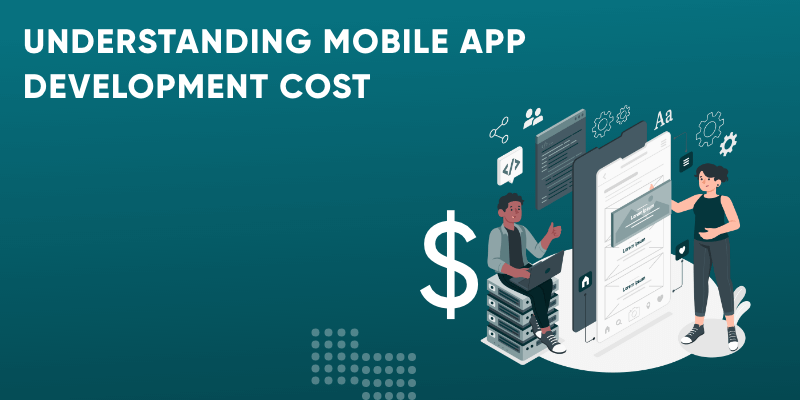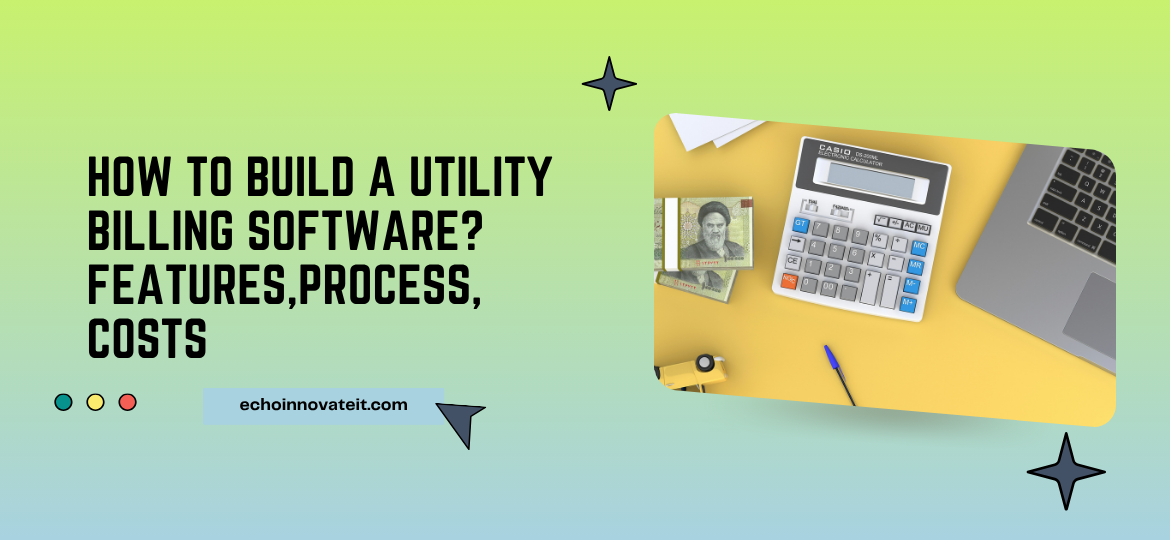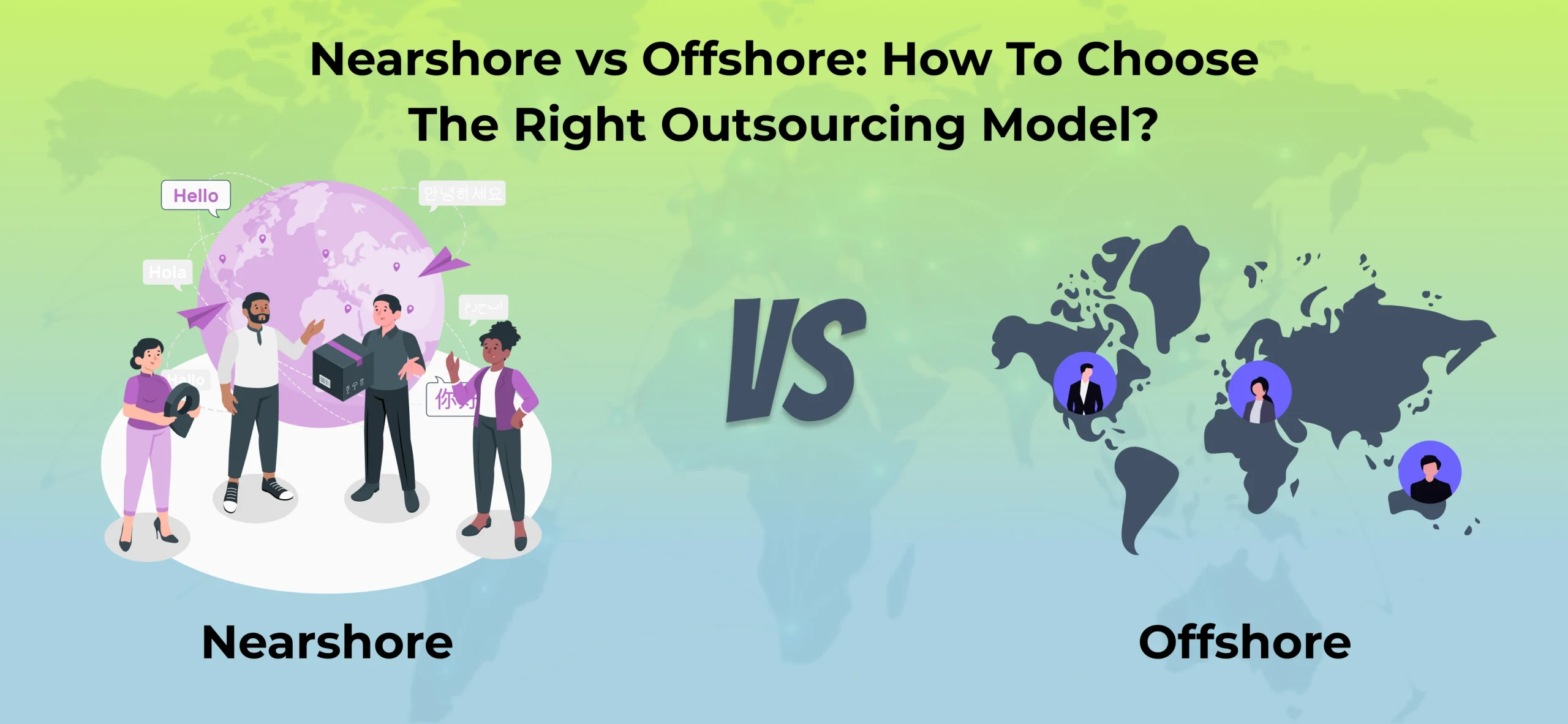What is total mobile app development cost? It is quite challenging to provide you with the exact cost of developing a mobile application.
Consider some of the most recent things or services you’ve purchased. There are varying price points depending on specific factors, whether it’s a car, a cell phone, or a cleaning service.
The same goes for your smartphone application. So, how to estimate app development costs? The price of the app will depend on your objectives.
You get what you paid for, like with most things in life. You cannot expect to create a fantastic application for a few dollars. However, just because you spend a lot of money doesn’t mean you’ll be successful.
Analogy
If you don’t know how to cook, spending a lot of money on kitchen tools won’t make you a skilled chef. To be successful, you must know what you’re doing.
So just because you want to spend as much money as possible developing your application doesn’t mean it will be a success if you don’t understand how to operate a business.
Once you’ve decided to take your business online, you’ll need to figure out how much it’ll cost to design an app. To cut a long tale short, the average cost of developing a high-quality app ranges from $40,000 to $60,000 for one platform and can reach $300,000 or more (web, iOS, Android). As a result, a basic app can take two months to develop, whereas a large project can take nine months or more.
The cost of your application is determined by a number of factors, including the app’s type, functionality, and design features, as well as their complexity, the IT vendor and location you choose, and the development method you use.
Breaking Down The Cost
If we assume an hourly rate of $40, the mobile app development cost ranges from $40,000 to $300,000+.
Our mobile app development company has analyzed a few research and shared our expertise in creating application cost ranges based on several aspects in this guide.
You can simply estimate the cost of your future app, learn calculating total cost, manage your budget, and save money. So, let’s get started on figuring out what aspects and funds you’ll need to invest in creating your application idea.
| Cost of a single platform | Time to be taken | |
|---|---|---|
| Simple App Development Cost | $40000 to $60000 | 2-3 months |
| Basic Application Price | $60000 to $150000 | 3-6 months |
| Custom App Development | from $300000+ | 9+ months |
Ways To Find Out Your App Development Cost
When looking at the cost of mobile app development, keep in mind that the companies that provide mobile app development services charge their customers in one of two ways:
Fixed charge
When the scope of work is very clear, this methodology can be used, and it works best with smaller projects. The most significant benefit of this choice is that the cost of mobile app development services is agreed upon with the client prior to the start of the development process.
Time and Work-Based Cost
This method is extremely dependent on the amount of time and effort required for a specific job. As a result, the cost estimate is based on an hourly rate. The benefit of this method is that it allows for more flexibility during the mobile app development process and is better suited for larger, ongoing projects.
The time and effort strategy is highly recommended. We understand that this may make you feel unsure and frightened, but you will have more freedom if you use this option. You will not only have an initial project estimate, but you will also have the opportunity to adjust the scope of the project during the mobile app development process. This will allow you to keep track of your application budget and create an application that your target audience will enjoy.
There is also a simple formula that can be used to estimate the cost of mobile application development. The only information you’ll need is the hourly rate and overall app development time. But, how to estimate the app development cost? The following is the formula for calculating app development costs:

We can draw the conclusion that the development cost and timeline of a mobile application are influenced by your application idea, as well as business and functional requirements. It is also determined by the app’s intended market. The cost of development in the banking or finance industry, for eg, differs from the development costs in other industries including automotive or home services applications, etc.
Cost Based on App Types
| App Types | Price | Timeline | Examples |
|---|---|---|---|
| Basic Apps | $5,000-$15,000 | 4-6 weeks | Camera, clock, local audio or video |
| Data-Driven Apps | $7,000-$15,000 | 6-8 weeks | Maps, Stocks, Calendar |
| Social Networking Apps | $50,000-$300,000 | 3-9 months | Facebook, Instagram, Twitter |
| On-Demand Apps | $50,000 – $100,000 | 4-8 months | Zomato, Uber, Ola |
| E-commerce Apps | $50,000-$300,000 | 4-9 months | Amazon, Shopify, Myntra |
| Authentication Apps | Starting from $60,000+ | 3-6 months | McDonald’s Loyalty App, Google Drive |
| Marketplace Apps | $300,000+ (web platform) | 9+ months | TripAdvisor, Booking.com |
| IoT and Hardware Apps | starting at $60,000+ | from 3-6 months | Beacons, Amazon Dash Buttons, WeMo, BELI Printing Service, Jo |
As aforementioned, the cost of developing an app is determined by a number of factors, such as the type of application, app development technology, app features and functionalities, business model, and app-level functionality (simple, complex, or an ideal blend of both). Depending on the type of app, we’ll discuss your app development cost estimate now.
Every application concept and project is one-of-a-kind. The app development budget provided below will assist you in understanding how to build your application on a budget. The cost of creating and developing mobile apps is calculated on a sliding scale.
Basic Apps
A basic application can work properly without internet connectivity or server components. These apps typically have five to six screens in total. The calculator app on your phone, for example, serves a clear objective and can be used without a connection to the web.
Data-Driven Apps
Data-driven applications require connectivity to function. These applications consume only specific information. These apps do not necessitate any type of verification or login information. These mobile applications also require back-end development, which increases the cost of such mobile applications. For example, the Weather app makes use of third-party API data.
Social Networking Apps
Without a doubt, social networking applications are the most dominant players in the mobile app market. Users can use these applications to send and receive instant messages, as well as share images, texts, and videos. As a direct consequence, the back-end architecture should be designed in such a way and with such a goal that it appears to be processing a large amount of data.
Mostly, these mobile applications are based on a minimum viable product. Instagram, for example, started out as a square-shaped photo-sharing application. The application now includes videos, reels, stories, and live interaction sessions. We believe that the MVP approach is ideal for any new project.
On-Demand Apps
On-demand apps are intended to cater to the specific requirements of their users. These mobile applications, which are available for both Android and iOS, are in high demand. Uber is a well-known on-demand transportation app that has a global following. These mobile applications, which necessitate login credentials, allow users to chat and phone.
Another example is the development of an on-demand home-services application, which must take into account a number of cost factors such as the technology used, team members, and features to be included.
E-commerce Apps
You can use e-commerce applications after logging in. These mobile applications provide extensive product catalogs, individual product pages, a wishlist, and a shopping cart from which the user can purchase items after making a payment. The payment transaction brought the check-out system to a close. Such applications require a very well-admin interface and a back-end team to track payments and inventory.
Authentication Apps
Authentication apps need a user to log in in order to provide full app functionality. The cost of developing an app of this type increases due to a large number of subordinate features. Logging in with a personal account, the user interacts with data that is synchronized across devices. This necessitates the development of a content and user management administration panel.
It is advised that you register via social media (Facebook, Twitter, etc). This is a straightforward one-step process that requires very few hours to execute. Our team has extensive experience developing apps with login features.
Marketplace Apps
A marketplace app contains functionality from both e-commerce and on-demand services because it is a more comprehensive version of these mobile applications. In the marketplace app concept, demand and supply are two sides of the economy. The logic, as well as interaction with the user, as well as interaction with the user, should be well defined. The cost of developing this type of application is higher because this procedure takes time.
Uber, for e.g., is entirely dedicated to transportation services. TripAdvisor, on the other hand, provides hotels, restaurants, airline tickets, and other services through a website and native iOS and Android apps.
IoT and Hardware Apps
Internet-of-Things applications are apps that connect specific physical objects or equipment to technology. When IoT technology comes into picture, these items become smart. Medical equipment, pet collars, home assistance devices, and other smart objects could fall into this category.
These mobile applications must be Bluetooth or Internet access capable of connecting to a device. This makes it easier to send and receive requests and data.
To build this type of application, you must have a ready-made gadget and adequate documentation. The hardware must function properly and in accordance with the instructions. The expense of developing an app can then be roughly estimated.
Cost Of Mobile App Development Based On Stages
The majority of the mobile app development process is comprised of the five steps listed below:
- Pre-development (also called – discovery or research)
- UX/UI design
- App development
- App testing and deployment
- Ongoing support and maintenance
The majority of software development vendors (70 percent) begin a project in the pre-research/discovery stage.
This step is no exception for our team because it allows us to clarify all of the app’s intricacies from both a technical and a business point of view.
Personal meetings between a customer and a software development vendor foster a shared understanding and trust.
Discovery Stage
The Discovery stage provides the following benefits
- Time and cost savings
- Requirements validation
- Goal-based design solution
- Risk coverage
- Synchronization of the Product Owner (client) with the team
- App project task prioritization
The most significant advantage you’ll gain following the discovery stage is a precise answer to the question, “How much does it cost to develop an app for your business?” An appropriate app development budget and delivery date are estimated based on the user stories in the product backlog. When the discovery stage begins, a cross-functional team is involved in the project. A Business Analyst, Software Architect, Designers, and other team members may be present. The following are examples of probable Discovery Stage deliverables:
- Finalized project concept
- UX/UI design
- Product backlog
- Project architecture plan
- Market & Competitor analysis (optional)
The discovery stage usually costs $10,000 to $15,000 and lasts 2-4 weeks. These costs and timelines are based on a typical 3-5 month app development project. Based on the project’s complexity, platforms, and features, the budget for the discovery phase could range from $50,000 to $100,000.
Final Pricing
The deliverables from the discovery phase are used in the subsequent stages of app development. Based on the project type, the team may begin app coding immediately or wait until the app design is complete.
A visual representation of the application is needed prior to actual app coding. As per surveys, the estimated price of app design for 11-20 app screens is $5,000. As a consequence, the cost of app design is proportional to the number of screens, the complexity of the design, and the use of any distinctive visual elements.
Similarly, the number and complexity of features, as well as the app concept and type, all influence the cost of app development. Free features include user login/logout, push notifications, in-app search by entity type, and basic one-to-one chat. The video and audio streaming feature of the content management system (admin panel) is more complicated and therefore more costly.
The app testing stage ensures that the application functions properly and is of high quality. According to logic, the cost of application testing is proportional to the app’s features and functions. In fact, app testing accounts for nearly 30% of the overall cost of a client-side (front-end) integration of an application. The front-end of an admin panel is less costly; approximately 10% less expensive.
Some Hidden Costs In Your App Development Process
Functional services are those that ensure the proper functioning and features of the app.
Whereas your developer may show you a feature, it will not work unless you pay for access to a service that includes a delivery mechanism. These services can cost hundreds or a few dollars per month, and the number of services available is virtually unlimited.
Depending on actual features and services, here are a few most common Mobile App Development Cost examples. This information can be used to calculate the price of your own app development project.
Functional Services
Functional services are those that ensure the proper functioning and features of the app.
Whereas your developer may show you a feature, it will not work unless you pay for access to a service that includes a delivery mechanism. These services can cost hundreds or a few dollars per month, and the number of services available is virtually unlimited.
Depending on actual features and services, here are a few most common Mobile App Development Cost examples. This information can be used to calculate the price of your own app development project.
Push notifications
It’s hard to think of an application that doesn’t make use of such a critical mobile feature. Push notifications entice users to engage with your app and consider taking the desired response, such as purchasing something. The estimated annual cost is $2,400.
Social And Chat
You need to use these services to motivate people to share and upvote your content on social media platforms. If you want social engagement in your app, you’ll nearly undoubtedly need to have a subscription to a service like one-to-one chat, group chat, or bot integration. The average annual cost is $1,200.
SMS
To integrate SMS messaging into your smartphone application, you’ll have to use a service like Twilio. The average annual cost is $500.
To implement email with your smartphone app, you’ll require an email marketing service subscription or CRM software for digital marketing. Assume these costs increase as your subscriber list grows. The average annual cost is $1,000.
Admin Services
You want to be in control as a creative professional, and you don’t want to have to call the IT department every time you need to access data or change information.
These are the most challenging charges to estimate because they will vary greatly depending on each app. However, just like all other app prices, they mount up and you’ll have to pay them on a regular basis. The standard app development approach does not provide a means to cut costs. It’s not an option to leave these out of your app management because you’d lose control over the content, users, and data.
Consider the following features of a dashboard:
Content management
It should be as simple as clicking and editing. You should be able to change your app content if you can edit a Word document – this is a must for your dashboard.
Dashboard emulator
Before publishing changes live to the user community, you’ll want to check how they look on the app first. It’s essential to have a previewer app!
Functional services management
Having separate dashboards for each of your services is unrealistic. Monitoring social activities and sending push notifications, emails, and SMS are essential capabilities for your app, and routine management tasks for these services should all be accessible from a single dashboard.
Dynamic updates
If you’re like most app owners, you’ll be updating your app on a regular basis – it’s the nature of the business! Every time a small content modification is made, some apps demand a lengthy resubmission process. Ensure that a dynamic update procedure is built-in, so a single click of a button on the application dashboard automatically pushes out content changes to all applications.
User profiles
You’ll need a method of keeping track of your users’ personal information. It is easy to overlook password reset forms during the design process – but a good designer does not do this!
Event/analytics collector
Do you want to know more about your customers’ in-app behavior, such as what they do in the app, how many downloads there are, which users access certain screens, and so on? This information should be simple to find.
Access controls
It’s unlikely that all administrators or users will have the same permissions. To regulate who may access and edit what within the app, you’ll want to use roles and permissions. This also applies to what users may view on their displays, their personal information, and/or access to premium content.
Data segmentation
You’ll want to divide users into groups based on their activity, profile, and other factors. This is handy for sending people messages and push notifications based on the sector they belong to.
If you want to transform your app into a business, you’ll also have to pay for server charges, legal fees, and startup costs.
Infrastructure Services
Infrastructural components such as where the app is hosted, where data is saved, and how information is stored are included in these services. All of these require backup and security servers to have redundancies and load balancers, which adds to the cost and complexity.
These are the fundamentals of servers. The servers are where the app hosting will take place. Unless you’re working for one of the world’s top corporations, you’ll want to outsource your hosting to companies like Amazon, Google, and Azure. Estimated annual cost: $12,000
Data storage
Data is king, and your app will acquire and store a lot of it. It’s essential that you know how and where your data will be stored. Estimated annual cost: $3,600
A content delivery network (CDN) is a network of distributed servers that send material to an app based on the user’s geographic location, the content’s origin, and a content delivery server. In other words, if you have users all over the world who must return to a single remote site to receive content, your app will function poorly. Companies like Akamai, CloudFront, and Dyn provide CDN services. These aren’t app development companies, but they can help you save money on your development expenditures. Estimated annual cost: $3,600
Images data
Most apps make extensive use of photographs. You’ll need a place to save, download, process (resize, trim, etc.) and transmit your photographs. Companies like CloudImage.io, Google, and ImageX offer such services. Estimated annual cost: $4,800
Tools, libraries, and assistance for app development. If you’re developing apps with premium deployment technologies like IBM MobileFirst, Kinvey, Kony, or Appcelerator, you’ll have to pay for them throughout the life of your app. Estimated annual costs: $1,200-100,000+
T Support Services
After the development phase is completed, you’ll have to pay for app maintenance. While these services aren’t technically part of the app architecture, they are an important part of any app deployment and can add up to a lot of money over time. You should always be able to address the following issues with your resources:
iOS and Android updates
Both platforms are regularly updated, necessitating maintenance, which might be significant. Estimated annual cost: $10,000
Submissions for app updates. Even if you use a dynamic update system, there will be instances when you need to resubmit updates. This isn’t a simple task. Estimated annual cost: $2,400
APIs. Every application, especially at the business level, frequently interacts with multiple third-party APIs. Any changes to these apps will necessitate API maintenance on a regular basis. In 2016, Facebook, for example, upgraded its API version four times; if your app is integrated with Facebook, you’ll need to update your app to reflect those changes. Furthermore, most businesses will gradually increase the number of apps with which an app interferes over time. Estimated annual cost: $5,000
Bugs exist in every application, and they might go unnoticed for months or even years. Apps that are slow to respond to issues reported by users are not well received by user communities. Estimated annual cost: 10-20% of overall mobile app development expenditure.
Maintenance costs (DevOps)
These are IT-specific infrastructure maintenance costs: servers, data storage, CDN, and image data will all necessitate some level of monitoring and maintenance. Estimated annual cost: 20%+ of overall mobile app development expenditure.
It is easy to overlook these additional fees, but they are essential to remember. The last thing you want is to run out of money, causing your mobile app development project to fall behind or stop entirely.
How To Handle The Hidden Cost Of App Development?
How much money do you have set aside for your app? Let’s imagine you only have a few thousand dollars to work with, but are firm about creating an app.
Is it possible? Yes.
If you don’t have enough money to create a completely functional app, you can at least start with what you have.
Consider creating a proof-of-concept app or a minimum viable product (MVP). Although the functionality, features, and style are not up to the mark, you can at least start in the right way.
It’s a fantastic choice for those of you who have a fantastic idea but don’t have $10,000 or $100,000 on hand.
The benefit of having an MVP is that it will make it easier for you to acquire money from outside investors if you decide to pursue your project further.
If you’re on a tight budget, here are some more excellent ideas for cutting expenditures.
- Note down the requirements
- Choose the right firm
- Build minimum viable product
- Monitor the app development regularly
- Choose templates built-in features
- Choose cross-platform app development
Other App Development Cost
Another choice you’ll have to make is whether to build a hybrid or native app. These various types of mobile apps are not all priced the same.
If you want to create a native app, you’ll need to make another option right now. Will you develop for iOS or Android?
Because native builds must adhere to certain platform rules, they often improve the user experience. It’s also simpler for native apps to access hardware on the user’s device, such as the GPS, camera, and contacts list. All of this adds to the expense of a mobile app.
If you want to create a native app, you should expect to spend more than $100,000 instead of $10,000. You’ll need to create two different native apps if you want to make an iPhone app for the Apple App Store and an Android app for the Google Play Store.
The cost of native mobile apps is high. Hybrid mobile apps, on the other hand, are substantially less expensive to create.
Hybrid apps also allow you to concurrently deploy on both Android and Apple platforms. Cross-platform builds take less time to produce, which means your app will reach the consumer market faster.
This approach will be a lot easier and less expensive for you if you use a hybrid platform. It also saves money on development and maintenance.
What Are The Reasons Behind Expensive App Development Costs?
Airplanes and cars are both modes of transportation, but they are vastly different. In software, the same can be stated. The expense of developing an Uber-type application vs an app like Today Weather, which just uses third-party API, is enormous. Also, custom app development becomes more expensive than using DIY app makers.
Why do people tend to undervalue software?
The following three factors contribute to the confusion:
- Apps are intangible, and software solutions are viewed as screens rather than hardware. All of the heavy work is done in the background in order to display this information. According to a study of Kickstarter campaigns, hardware projects get more financing than software concepts. People think hardware is to be more obvious, but the software is out of sight and usually does not have more attention.
- Immeasurable intellectual capital value – it’s difficult to quantify the amount of creativity and thinking put into a project from the start. To guarantee that all of the app’s elements and processes are proper, a multi-disciplinary team usually takes up the space. Clients do not witness the end outcome of this labor because there are no tangible deliverables, only a concept for an app. As a result, many individuals are puzzled by the final app development cost for a customized software development service.
- Non-obvious advantages – some people like attractive, simple, and intuitive goods, while others want their apps to have more power and speed. This is comparable to Mac users and people who have never realized the value of Apple’s products.
Total Cost
The total cost of mobile app development depends on a variety of factors. It depends on who creates your app, how it is created, and what you want it to accomplish. For some of you in Toronto, a mobile app development company with years of experience building mobile apps may be the ideal alternative. A smaller development team or a single app developer may be beneficial to others. Building an app isn’t inexpensive, as you can see from this guide. $1,000 isn’t going to get you very far, especially in a competitive market like Toronto. A flashlight app will clearly cost far less than an Uber or WhatsApp app. If you had $10,000 to invest in mobile app development in Toronto, however, you can surely get started and develop something useful. If you’re on a tight budget, consider creating a minimal viable product or a hybrid app. This reduces app functionality, app maintenance, and, as a result, app development costs, which can be an advantage in a city like Toronto, where living expenses can be high.
Having more money at your disposal can make your life a whole lot easier. However, just because you invest $100,000 on an app does not guarantee it will be successful. It will be a lot easier for you to begin your development process now that you know what types of apps can be developed based on budget. To estimate the cost of your software development project, use the Echo Innovate IT cost calculator. Do you intend to invest $10,000 or $100,000 in the development of your mobile app?
Wrapped Up
Echoinnovate IT can help you save up to 90% on app development. What makes this possible? WE handle all the costs. Our platform can accommodate whatever you require, whether you’re seeking a DIY solution or want us to build a mobile application for you. In the form of plugins, we offer a good amount of pre-built functionality at your disposal. We can design a custom function for you if you don’t see a plugin that matches the feature you require. Echoinnovate IT works with any mobile device and operating system, and you can scale your app indefinitely while maintaining on budget.
FAQs
How much time does it take to develop an app?
If you aim to construct a medium-complexity app, the implementation timeframe can range from 6 to 9 months. In general, the time it takes to develop an app ranges from one to nine months. It is depends on a variety of factors, including the number of features and their complexity, the design’s distinctiveness, the use of third-party services, and so on.
How much budget should I allocate for the app maintenance?
Over the next two years, the cost of maintaining an app typically accounts for 35 percent of the total budget spent on original app creation. Please keep in mind that the amount will not be less than $5,000 to $10,000 per year. According to recent estimates, around 50% of the app development cost will be spent on maintenance in the first year, 25% in the second, and 15% – 25% in each subsequent year.
How can you come up with your own app budget?
The following is a step-by-step guide on making your own budget app:
- Make sure you’ve done your homework and know who your competitors are.
- Determine how your product is unique and superior.
- Engage the mobile app development services of a company.
- Recognize the hourly growth rates.
- Begin with a minimum viable product (MVP) and a minimal app design.
- Keep an eye on the situation and participate in it.
- Request a comprehensive project estimate.



